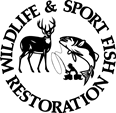Casa Blanca Reservoir 2018 Survey Report  (PDF 714.5 KB)
(PDF 714.5 KB)
If you have difficulty accessing the information in this document, contact the TPWD Inland Fisheries Division for assistance.
Casa Blanca Reservoir - 2018 Survey Report
Prepared by John Dennis and Mitchell Nisbet
Inland Fisheries Division - San Antonio District
This is the authors' summary from a 22-page report. For a copy of the complete report, use the download link in the sidebar.
Fish populations in Casa Blanca Reservoir were surveyed in 2018-2019 using electrofishing and gill netting since the last report (2014). Historical data are presented for comparison. This report summarizes the results of the surveys and contains a management plan for the reservoir based on those findings.
Reservoir Description
Casa Blanca is a 1,055 acre reservoir located near Laredo, Texas, in the Rio Grande River watershed. In 1990, the county park located on the lower end of the reservoir was acquired by Texas Parks and Wildlife Department and opened in March of 1991 as Lake Casa Blanca International State Park. Major uses include recreation and irrigation for a golf course. Water level in the reservoir fluctuates, however water level is not recorded. Angler and boat access is very good. Native emergent vegetation occupied 24% of the reservoir in 2018.
Management History
Important sport fishes include Largemouth Bass, catfishes, and Hybrid Striped Bass. Harvest of all sport fish species, except Largemouth Bass, has been regulated according to statewide size and daily bag limits. Largemouth Bass harvest is currently regulated with an 18-inch minimum size limit (implemented in 1994). Palmetto Bass have been stocked regularly with stockings occurring in seven years since 2004. In 2014, Sunshine Bass were stocked instead of Palmetto Bass. Florida Largemouth Bass fingerlings were last stocked in 2011. ShareLunker fingerlings were stocked in 2006, 2008, and 2010.
Fish Community
- Prey species: Gizzard Shad and Bluegill were the primary prey species, and their combined abundance was lower in 2018 than in 2014. Despite lower prey abundance, body condition of predator species (Largemouth Bass, Hybrid Striped Bass, and Blue Catfish) remained consistent since 2010 suggesting that lower prey availability in 2018 was not having a negative impact on predator species.
- Catfishes: Relative abundance of Blue and Channel Catfishes was lower in 2019 than in 2015. However, relative abundance of legal-harvestable size Blue Catfish in 2019 was similar to past years. The Channel Catfish population continued to be comprised of mostly sub-legal size individuals.
- Hybrid striped basses: Relative abundance of Hybrid Striped Bass was lower in 2019 than in 2015, and legal-harvestable fish comprised 19% of the population. This species grows to legal harvestable size in 3-4 years.
- Largemouth Bass: Relative abundance of Largemouth Bass was lower in 2018 than in 2014. Similarly, relative abundance of legal-harvestable size fish was lower in 2018 than 2014. This species continues to experience rapid early-life growth attaining 14 inches in 2.5 years on average. Florida Largemouth Bass introgression remains very high (>80% Florida Largemouth Bass alleles) indicating fish possess high potential genetically to attain trophy size (>10 lbs).
Management Strategies
Continue to manage fisheries with current regulations. Stock Hybrid Striped Bass annually at the rate of 15 fingerlings per acre. Assess for presence of invasive species concurrent with fisheries and habitat sampling. Fishes will be sampled every four years according to the objective based sampling plan.

Performance Report as required by Federal Aid in Sport Fish Restoration Act Texas Federal Aid Project F-221-M-5 Inland Fisheries Division Monitoring and Management Program